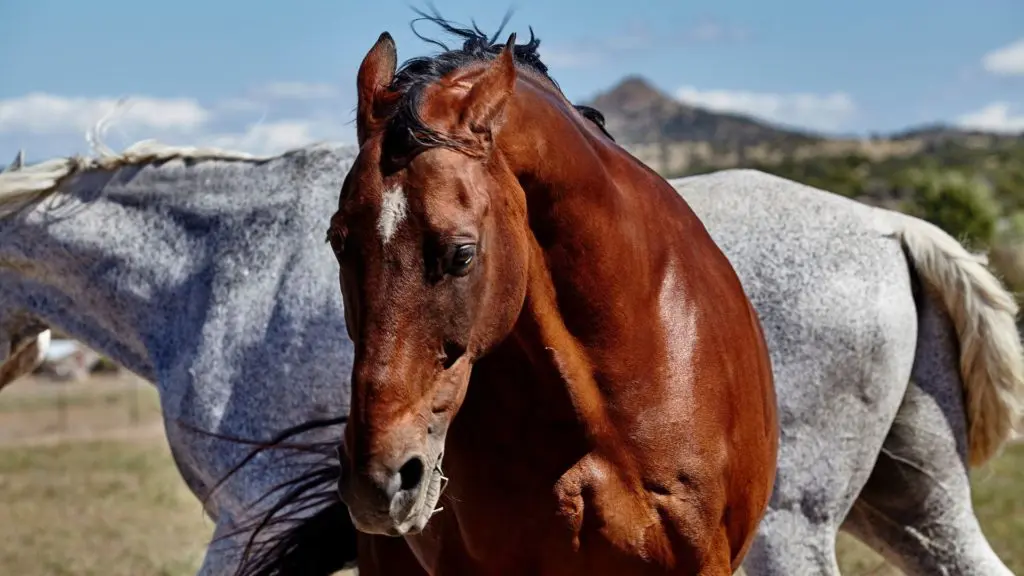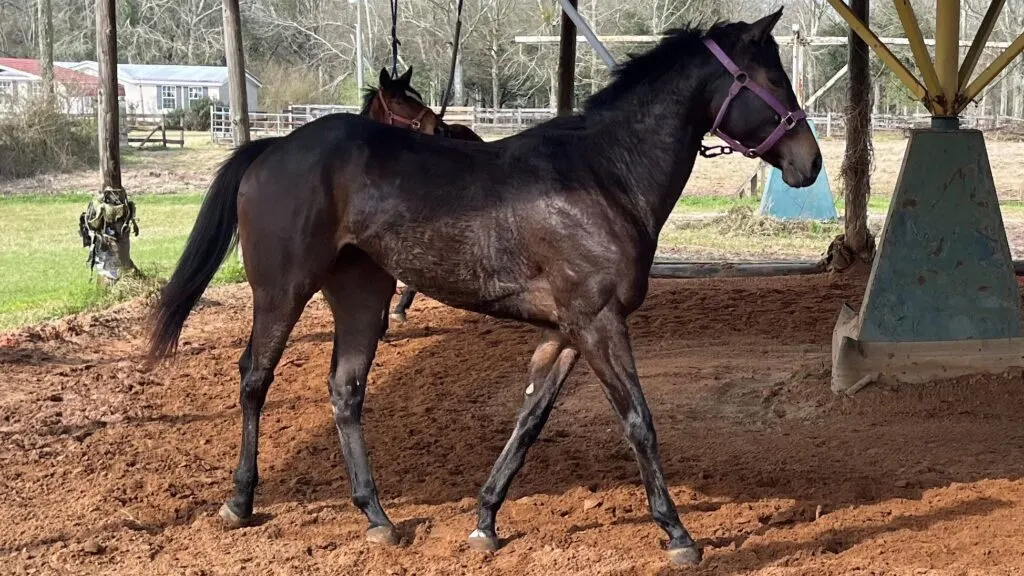Last updated: June 21, 2023
Who said understanding horses was solely for the experts? Just like us, horses have their unique ways of expressing feelings. However, missing certain cues may lead to serious safety issues. That’s why it’s critical to be able to spot the warning signs of a dangerous horse.
While horses can’t talk, they communicate loudly through their behavior. Aggression, like biting or kicking, is a clear red flag. But other signs are subtler – a fearful horse might shy away or bolt unexpectedly. Sudden changes in behavior or mood swings might also hint at potential danger.
Don’t worry if this all sounds a bit overwhelming now. In this guide, we’ll delve deeper into these signs, giving you a clear understanding of what to watch out for. It’s all about ensuring your safety while enjoying the incredible experience of interacting with horses.
Understanding Horse Behavior
Grasping normal horse behavior is fundamental to understanding when something’s off. Let’s start with the basics. Horses are herd animals, meaning they thrive in groups and establish social hierarchies. Regular behaviors include grazing, social grooming, and play. Communication is largely non-verbal and nuanced, involving ear positioning, facial expressions, body posture, and tail signals.
However, individual temperaments can vary greatly. Some horses are naturally energetic, others are calm, and still, others may be shy or more assertive. Getting familiar with your horse’s unique personality is crucial to discern any unusual behaviors.
Any abrupt change in your horse’s regular behavior can serve as a warning sign. This could be anything from sudden aggression to unusual lethargy or fear. As someone who spends time around horses, it’s important to stay vigilant and responsive to these changes. By doing so, you play a crucial role in maintaining a safe environment and ensuring the well-being of these majestic creatures.

Common Signs of a Dangerous Horse
Horse communication is subtle yet expressive. Knowing what to look for can help prevent a potentially dangerous situation.
Aggressive behaviors often include acts such as biting and kicking, but there are subtler signs as well. A horse with its ears pinned back, bared teeth, or a swishing tail could be signaling aggression. A horse standing taller, rearing, or charging are other signs to watch out for.
Fear in horses may manifest in behaviors like shying away, bolting, or panicking, but look for other signs too. Wide eyes, trembling, excessive sweating, and pacing could all suggest fear. Additionally, a horse turning its back or attempting to escape are important indicators.
Unpredictability is another danger sign. A normally calm horse suddenly becoming jittery or a friendly horse becoming standoffish might signal an issue. Changes in eating or sleeping habits and mood swings should also be noted.
Dominance behaviors often present as disobedience, such as refusing commands or constantly testing boundaries. A horse that’s trying to establish dominance may stand tall, invade your personal space, or try to move you out of their way.
Understanding these signs can better equip horse handlers to manage potential risks. Remember, safety is paramount when interacting with these powerful and sensitive animals.

What to Do If Your Horse Shows Signs of Aggression
When dealing with a horse showing signs of aggression, it’s important to establish your dominance in a way that doesn’t put you in harm’s way. One way to do this is to avoid letting the horse crowd you. This means maintaining a safe distance from the animal and using your body language to communicate that you are in control.
Establishing dominance over a horse can be achieved through consistent training, positive reinforcement, and clear communication. It is important to establish trust and respect with the horse and to avoid using aggressive or physical methods that could put the handler in harm’s way. Setting boundaries and maintaining consistency in training can help establish the handler as a leader without resorting to harmful tactics.
By standing tall, making eye contact, and using confident movements, you can establish yourself as the leader and gain the horse’s respect. If your horse starts displaying aggressive behaviors like biting, kicking, or rearing, your immediate priority should be to ensure personal safety. Calmly remove yourself and others from the horse’s vicinity. Don’t turn your back or run, as it may trigger a chase instinct.
After ensuring immediate safety, it’s crucial to consult with an equine behaviorist or trainer who can guide you on managing and correcting these behaviors. It might be a matter of establishing dominance or adjusting your horse’s environment. However, this process should always be approached with patience and professional assistance.
Here is a helpful YouTube video that addresses aggressive horse behavior.
Prevention Measures
Prevention, they say, is the best cure, and this is particularly true when caring for horses. Here are some ways you can proactively reduce the likelihood of dangerous behaviors cropping up.
Routine health check-ups are a must. Regular visits from your equine veterinarian can help spot and address any health issues early on. Alongside this, keep up with essential maintenance tasks like hoof care, dental checks, and appropriate vaccinations. A healthy horse is a happier horse and less likely to exhibit problem behaviors.
Proper training and socialization also play a pivotal role. The right training helps establish respectful boundaries between you and your horse. Socialization, on the other hand, enables your horse to comfortably interact with other horses and humans, reducing anxiety and aggressive tendencies.
In addition to routine health check-ups and proper training, some other prevention measures for horse safety include regular exercise and adequate nutrition, proper handling and equipment use, and a safe and secure environment.
It is important to monitor the horse’s behavior and environment for potential hazards and to take steps to address any issues promptly. Additionally, educating yourself on horse behavior and care can help prevent accidents and injuries.
Remember, a stitch in time saves nine. These preventative measures not only ensure your horse’s well-being but also create a safer and more enjoyable environment for everyone involved.

A Personal Account: Navigating Through Challenges
Let me share a personal story that might resonate with many of you. Currently, I’m caring for a young filly who recently injured her leg. Her injury has left her in a constant foul mood, and she pins her ears back every time I enter her stall. But, despite her clear warning signals, I have responsibilities I must fulfill – feeding her and checking on her injured leg.
Approaching this situation requires both caution and confidence. Whenever I enter her stall, I make sure to move slowly, giving her time to adjust to my presence. Quick or unexpected movements might startle her, so I ensure each of my steps is deliberate and calm. Confidence is key here – horses are excellent at picking up on our emotions and can react negatively to apprehension or fear.
Yet, even with the utmost confidence, safety remains my top priority. I always ensure I’m facing her and have enough room to quickly move out of her way should she decide to charge. Being aware of your surroundings and having an escape plan is crucial when dealing with potentially aggressive horses.
This experience is a stark reminder of the respect and patience needed when caring for these powerful animals. It underscores the importance of understanding equine behavior and acting accordingly to ensure the safety and well-being of both you and the horse.
Warning Signs of Distress
Just as humans display physical signs when something isn’t right, horses, too, have their ways of showing discomfort or distress. Paying attention to these signs can help you act swiftly and prevent a situation from escalating.
First, let’s talk about physical changes. A loss of appetite or sudden weight loss in your horse can be cause for concern. Additionally, subtle changes in body language, like drooping head or lethargic movements, might hint at an issue. These could signal illness or stress, so it’s important not to ignore them.
Next, let’s consider signs of discomfort. Limping could indicate pain in the foot or leg, while restlessness might suggest an overall unease. Have you noticed your horse rolling frequently or sweating excessively? These are signs that your horse may be in pain or distress.
Lastly, keep an eye out for repeatedly harmful behaviors. Head tossing could be a reaction to discomfort in the mouth or head, while cribbing (biting on objects and sucking in air) and weaving (repeatedly swaying side to side) can be signs of stress or boredom. These behaviors aren’t just harmful to your horse’s physical health, but they can also impact their mental well-being.
Understanding these unusual physical signs is crucial to ensuring your horse’s health and safety. Remember, when in doubt, always consult with a veterinarian or an equine behavior expert.
What to Do If Your Horse Shows Signs of Distress
On the other hand, if your horse shows signs of distress like pacing, excessive sweating, or loss of appetite, it’s essential to remain observant and responsive. Try to identify any potential triggers in their environment.
However, do not attempt to comfort the horse during a panic episode, as this can be dangerous. Instead, contact a veterinarian immediately, as these behaviors could signal health issues. Simultaneously, an equine behaviorist can help identify if the distress is due to psychological factors. Remember, your quick action can play a vital role in addressing the issue and ensuring your horse’s well-being.

Conclusion
In the world of equine care, understanding and responding to warning signs of a potentially dangerous horse is an essential skill. It promotes safety and helps you build a more harmonious relationship with your horse. From recognizing the subtle shifts in their behavior to being aware of more overt signs of aggression or distress, every piece of knowledge equips you better.
However, while this understanding is critical, remember that patience, empathy, and respect for your horse should underpin every interaction. In challenging situations, taking a step back, ensuring safety, and seeking professional advice are prudent steps to take. Most importantly, proactive measures like regular health check-ups, proper training, and providing mental and physical stimulation can greatly reduce the chances of dangerous behaviors occurring.
The journey with your horse, much like any significant relationship, will come with its highs and lows. But by staying informed, alert, and compassionate, you’ll be better prepared to navigate through any hurdles. Here’s to the joy and adventure that come with being a proud horse owner. Safe riding, everyone!
Meet Miles Henry
An avid equestrian and seasoned racehorse owner, Miles Henry brings his extensive experience to the equine world, proudly associating with the AQHA, The Jockey Club, and various other equine organizations. Beyond the racetrack, Miles is an accomplished author, having published various books about horses, and is a recognized authority in the field, with his work cited in multiple publications.
🔗 Connect with Miles:
Twitter
Facebook
YouTube: Check out race highlights, horse care tips, and more!

